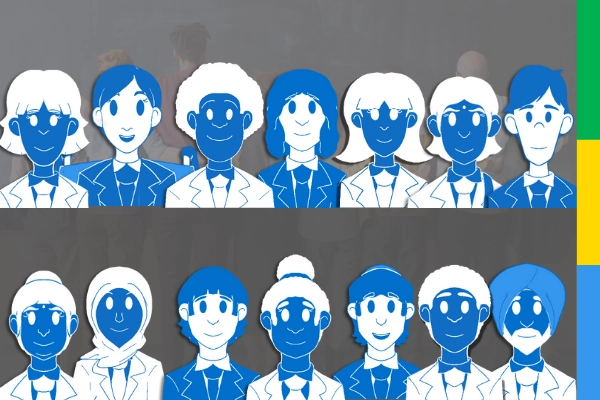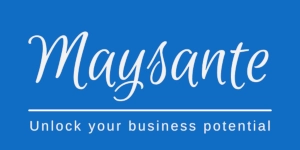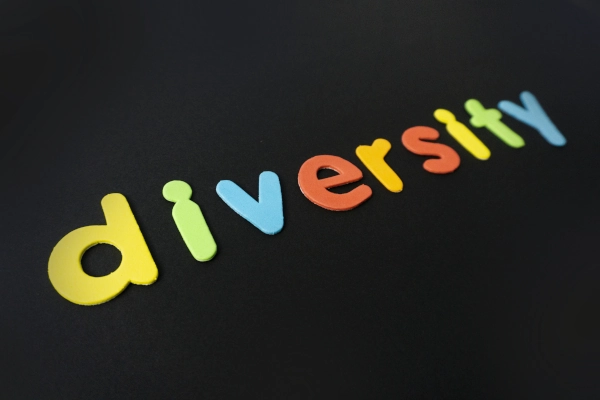Diversity is the unique characteristics that make us individuals. It is those traits that make us all different. Reflect on this statement for a minute. You will recognise how important it is to understand and acknowledge the differences in people. In the workplace, you’ll realise what attracted you to employ the person in the first place is their uniqueness. Why then is it so difficult to celebrate our differences?
There are several types of diversity. These include:
- Cultural diversity
- Racial diversity
- Gender/sex diversity
- Disability
- Sexual orientation diversity
- Age diversity
- Religious/ belief diversity
- Diversity of educational backgrounds
- Diversity of interests
You need to understand an individual can fall into multiple types of diversity. Therefore, it is essential not to put people in boxes. There is more to a person than their race, ethnicity, cultural background, age or gender. Avoid generalisations. As well as the visible aspects, there are also the aspects of diversity that are invisible. For example, sexual orientation, religion/beliefs and neurodisability.
Culture
Organisations in all sectors have a global reach. You may have employees, customers or suppliers around the globe. Most companies will have their headquarters in one location. The culture of that geographical location typically heavily drives the culture of the whole organisation. However, the best approach will be for the organisation to recognise the differences. And celebrate the different cultural backgrounds of their employees. An individual’s cultural background will affect their communication style. It will also affect their preferences, food choices, music preferences and their views of the world. It is their heritage.
As a leader, you can create an environment that accommodates different cultural backgrounds. Thus, respect for all should underpin the integration of diverse cultures in your workplace. You must empathise with your employees and their cultures. You should also understand the cultural make-up of your workforce. This will help you determine which cultural festivals you may celebrate for example. As a result, celebrating various cultures will help create awareness and educate your workforce.
Race
Race is a social construct. It categorises people based on their physical characteristics, mainly skin colour and appearance. Race is often confused with ethnicity and the two are used interchangeably. However, ethnicity describes anything from nationality, language, culture, to religion.
In the workplace and society at large, people often make assumptions based on their race. It’s quite common to assume that every Black person you meet is from Africa or the Caribbean. Likewise, all Asians are from Asia and Whites from Europe. It doesn’t matter what the person’s nationality is for example. How often have you asked a Black or Asian person “where are you from?” and followed your question with “where are you really from?” or Where are your people from?”
As a leader, do you treat people differently based on their race? How do you ensure racial equity in your workplace? How do you justify paying some of your employee’s lower salaries, purely based on their race?

Gender/Sex
Gender diversity in the workplace is about having a fair and equitable proportion of men and women. This applies to all levels of the organisation. Women are often underrepresented. Especially at the senior management level and at the C-Suite. Although there is some progress in bridging the gender representation gap. There is still notably less representation of Black women in senior and executive positions. Maternity often provides an excuse to give women less pay rise or promotion. Improvement in family-friendly policies is helping to bridge the gap. For example, shared parental leave, encouraging men to take leave once their child is born, or they adopt. However, since its introduction in 2015, not many men have taken shared parental leave. The report by law firm EMW found that only 27% of eligible fathers took paternity leave in 2020-21. More can be done to support women in the workplace.
Women mostly sacrifice their careers or are expected to do so when they have young families. Employers also make assumptions when it comes to recruitment, promotion and senior appointments. Even though everyone worked from home during the pandemic, more women were likely to be responsible for home educating their children than their male partners.
Many talented women are paid less than their male counterparts. Again, decisions are made by leaders based on traits a person possess, rather than their abilities. And the value they bring to the organisation. PwC finds that the introduction of gender pay gap reporting is helping close the gap in the UK.
Disability
Diversity in disability ranges from physical, cognitive, to neurological disabilities. According to the House of Common Library, “Disabled people have an employment rate that is 28.8% points lower than that of people who are not disabled.” The disability employment gap has increased over the pandemic.
Awareness around various categories of disability in the workplace is limited. Employers can do more to support disabled people. They can understand how they can integrate them into the workplace. Unlike other types of diversity, people can become disabled over the period of their employment. Disability as defined in the Equality Act 2010 is “if you have a physical or mental impairment that has a ‘substantial’ and ‘long-term’ negative effect on your ability to do normal daily activities”.
You can make reasonable adjustments as an employer. As a result, this will make your workplace more accessible to people with disability. You can create roles to make them suitable to their abilities.
Sexual Orientation
Sexual orientation diversity encompasses sexual orientation, gender identity and gender reassignment. A recent CIPD research reported that LGBT+ employees are subject to more harassment and discrimination in the workplace compared to their heterosexual counterparts. People Management reports that sexual orientation discrimination has increased by 165%. This is shocking and unacceptable.
As a leader, you need to develop and drive a workplace culture. A culture that has zero-tolerance for discrimination and harassment. You need to create an environment that is safe for all your workforce.
Age Diversity
The workplace is becoming increasingly age-diverse. There are now five generations in the workplace. This enriches the experience, skills, and knowledge of the workforce. The main challenge that age diversity presents to employers is that more people are working for much longer. Up to 75 years and young people are hungry to come into the workplace and make their mark. People over 50 years are more likely to struggle to find a new job, especially if they are made redundant. Older employees often compromise on their salaries when they change jobs. They are also likely to be told by an employer they are overqualified when they apply for new jobs. Similarly, young people may also be told that they are too inexperienced for roles.
Leaders need to invest in their people. You need to develop, train and upskill your workforce to make them employable and productive. Encourage sharing of knowledge, skills and expertise across the various generations. Each generation can add value to your organisation.
Religious / Belief
Religion and belief shape an individual’s ideology, values and behaviours. Most employees do not feel able to discuss freely their religion or beliefs in the workplace. This means that they have become a taboo subject. However, religion/belief is particularly important to the people who have faith or belief. Although it may be frowned on for certain religions to openly practice their faith in the workplace, there has been a recent increase in mindfulness in the workplace. For example, meditation practices which stemmed from certain religions such as yoga are more acceptable.
Religious divide in the workplace can alienate some employees. Some employees may have strong beliefs. For example, veganism, vegetarianism may or may not be linked to their religion or culture. People’s beliefs or religions can change over a period.
Leaders have to develop empathy with different religions and beliefs to help integrate employees with faith and beliefs into their workplace.
Diversity of Educational Backgrounds
Educational backgrounds shape people’s behaviours and attitudes. Education often open doors and presents opportunities for people. According to gov.uk, graduates earn up to £10,000 more per year than non-graduates. . People from certain types of educational backgrounds are more attractive to top employers. For example, Russell Group universities and other top universities around the world. Employers will often target these graduates to fill their vacancies.
People who do not have higher education qualifications can work their way to the top of organisations. However, it takes them much longer to do so.
Leaders can support their employees without qualifications to achieve qualifications. This can be supported through apprenticeship programmes. Part-time learning through providers such as the Open University is also another way. They can pay for their qualifications and give them time off to learn. They can also allocate them mentors who have relevant qualifications and skillset to support them.
Diversity of Interest
Personal or individual interests drive diversity of interests. Individuals may pursue interests that draw them to other people within the workplace who share similar interests.
As a leader, understanding your employees’ interests can be a useful tool when determining your engagement strategies.
Diversity is a complex subject. You cannot have a one size fit all approach. Having a truly diverse workforce means that your work environment reflects all the facets discussed above. You will need to be proactive as a leader. This helps to ensure everyone feels welcome, included and can be their true self at work. You create an enjoyable workplace. And a lasting impact on your employees, customers and your other key stakeholders.

